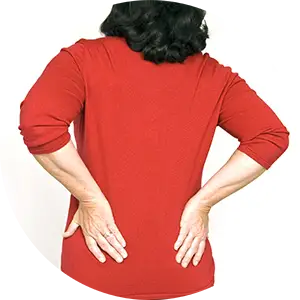Should I seek chiropractic care or medical care for sciatica?
Chiropractic care can be a safe and effective first-line treatment for sciatica because it focuses on addressing the condition’s underlying cause. Chiropractors are trained to identify subluxations in the spine and other musculoskeletal imbalances that can contribute to sciatic nerve compression and irritation.
By using a combination of spinal adjustments, manual therapies, and other modalities, chiropractors can help reduce inflammation, alleviate pressure on the sciatic nerve, and restore proper alignment and function to the spine. Chiropractic care can also help improve flexibility, strength, and mobility in the affected areas, which can help reduce the risk of future sciatic episodes.
Unlike other treatment options, such as medication or surgery, chiropractic care is non-invasive and typically does not have significant side effects. This makes it a safe and effective option for many people with sciatica, including those who may be unable or unwilling to undergo more invasive procedures.
Overall, seeking chiropractic care for sciatica first can help you avoid more aggressive and potentially risky treatments while providing a conservative and holistic approach to addressing the underlying cause of your symptoms.
What is the best treatment for sciatica?
The best sciatica treatment depends on the underlying cause of the condition. Chiropractic care focuses on identifying and correcting that underlying condition. We’ll help improve flexibility, strength, and range of motion while fixing any structural issues to provide natural sciatica pain relief.
What causes sciatica flare-ups?
Sciatica can be triggered by herniated discs, spinal stenosis, degenerative disc disease, piriformis syndrome, injury or trauma, a sedentary lifestyle, and obesity. Identifying these underlying causes is essential to get rid of sciatica for good.
What exercises help with sciatica?
Exercise is an important aspect of any sciatica treatment plan, but it’s important to choose exercises that don’t exacerbate the situation. Some sciatica exercises to relieve pain include hamstring stretches, pelvic tilts, and gluteal stretches. Muscles tightness can put extra pressure on the sciatic nerve, so exercises that reduce muscle tension and improve stability of the spine are key.
How should I sleep with sciatica?
Sleeping with sciatica can be challenging because the pain can be exacerbated by certain sleeping positions. However, there are some sleeping positions that may help alleviate sciatica pain:
- Sleeping on your side: Sleeping on your side with a pillow between your knees can help to align your hips and relieve pressure on the sciatic nerve.
- Sleeping on your back: Sleeping on your back with a pillow under your knees can help to reduce pressure on the lower back and sciatic nerve.
- Sleeping in a fetal position: Sleeping in a fetal position with a pillow between your knees can help to reduce pressure on the lower back and sciatic nerve.
- Avoid sleeping on your stomach: Sleeping on your stomach can put extra pressure on the lower back and exacerbate sciatica pain.



